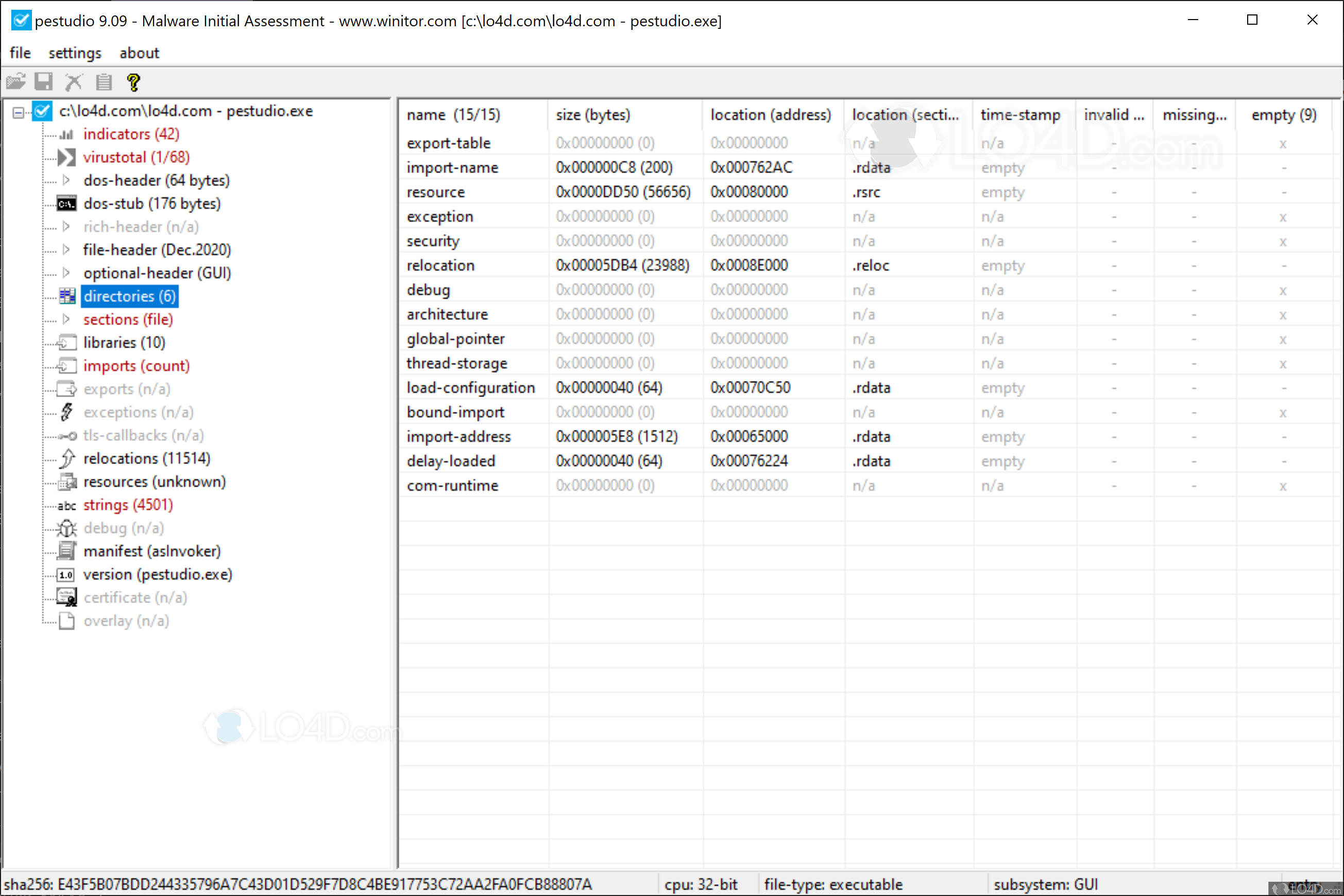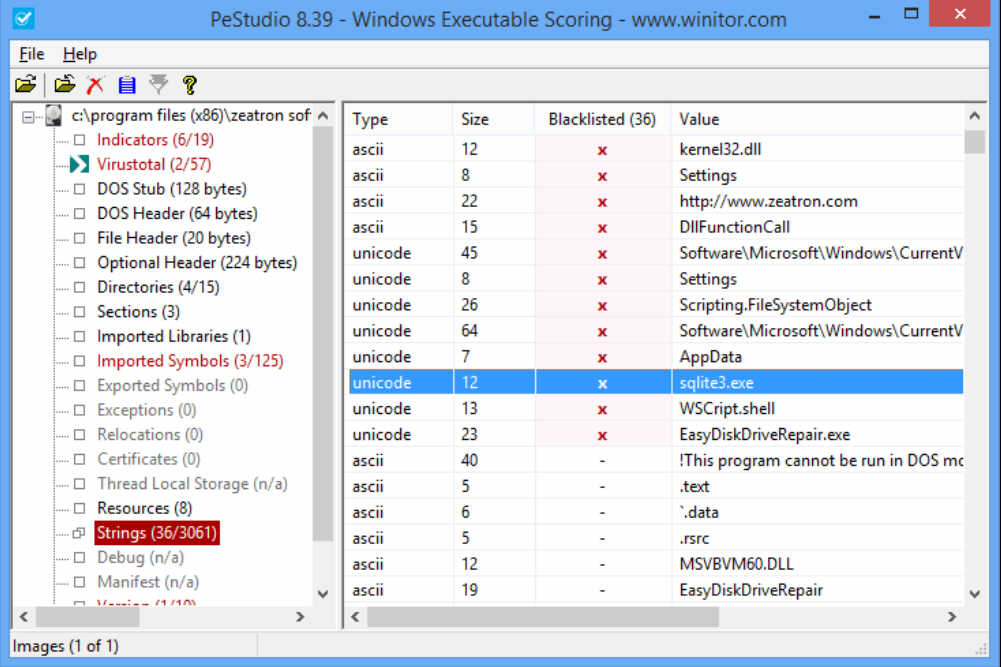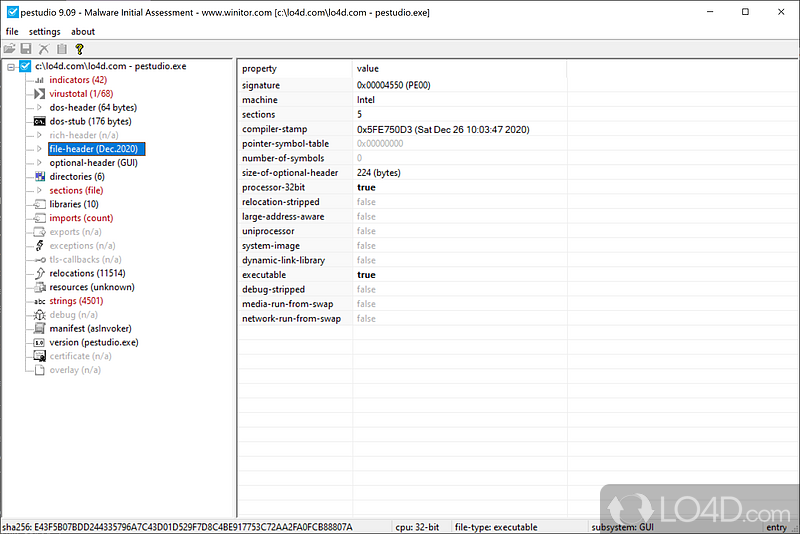
Pestudio linux windows#
Zero Wine is a full-featured tool used for dynamic analysis of Windows malware on Linux. It can also be adjusted to run some custom scripts and also generate comprehensive reports.Ī few other tools that can be used for fully automated analysis are: Malheur is used to analyze the data collected by behavioral sandboxes. TOOLS: Cuckoo Sandbox is an open-source automated malware analysis platform used to perform fully automated analysis. Fully automated analysis is considered the best way to sift through large quantities of malware on network infrastructure. It also produces a detailed, easy-to-read report regarding the security teams' file activity, network traffic, and registry keys. This type of analysis is used to determine the potential effects of the malware if it were to infiltrate the network and function. This is one of the easiest and quickest ways to assess suspicious files. These steps form a pyramid, and the complexity and skill requirements increase as we approach the top of the pyramid. Malware analysis is a process that requires a few formulated steps. Get Started With The "Malware Fundamentals" Course Today > It also helps in the detection of unknown threats from some of the most sophisticated malware. Hybrid Malware Analysis can easily detect hidden malicious codes and extract indicators of compromise (IOCs) statically from the unseen code. Therefore, security teams resort to a combination of static and dynamic malware analysis, known as hybrid analysis that is the best of both approaches. Static malware analysis cannot detect sophisticated malicious codes, and dynamic malware analysis might not succeed in detecting sophisticated malware as they hide in the presence of a sandbox environment. It is more efficient, effective and provides a higher detection rate than static analysis. It also includes memory writes, registry changes, and API calls. The malware's binary can be reverse engineered using a disassembler and debugger to understand and control the functions of the malware while executing it. Dynamic malware analysis is a behavior-based approach to detect and analyze the malware under observation. Malware components are executed within a safe virtual environment (called sandbox) to observe its behavior. Since it is signature-based, it will be ineffective against the latest or unknown malware types or in situations where more sophisticated attack scenarios conceal the malware. Static malware analysis also includes fingerprinting, virus scanning, and memory dumping.

The malware's binary can be reverse engineered using a disassembler. It is a signature-based technique, i.e., the signature of the malware's binary is determined by calculating its cryptographic hash. Static malware analysis is used to examine the file for signs of malicious intent. Here, the malware components or properties are analyzed without actually executing the code.


Malware Analysis can be either static, dynamic, or hybrid of the two. The outcome of malware analysis is helpful in the detection and mitigation of any potential threats related to the malware.

Malware Analysis understands the purpose, functioning, or behavior of the suspicious file, particularly malware.
Pestudio linux software#
Malware is malicious software used to cause extensive damage to data and systems by gaining unauthorized access.


 0 kommentar(er)
0 kommentar(er)
